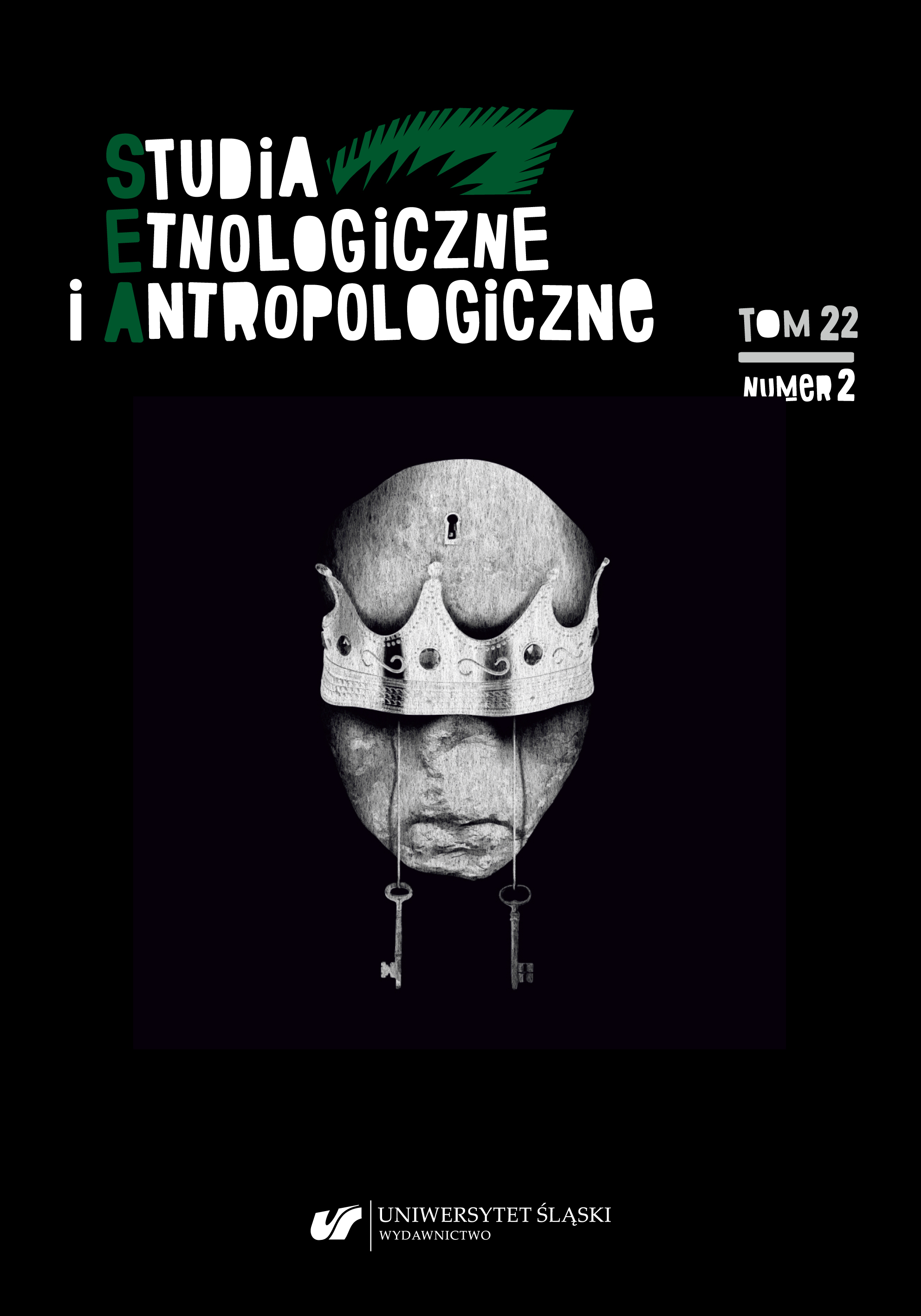Appadurai A., 1996, Modernity at large: Cultural dimensions of globalization, Minneapolis, University of Minnesota Press.
Google Scholar
Bauman Z., 2000, Globalizacja, tłum. E. Klekot, Warszawa, Państwowy Instytut Wydawniczy.
Google Scholar
Baumann W., 2022, [Rozmowa niepublikowana, przeprowadzona przeze mnie podczas 2a edizione dei TAFISA European Sport For All Games, 26.09.2022 w Perugii].
Google Scholar
Berrett U., 2014, Traditional sports and games as a means for integration of people with disabilities, „Journal of Sport Science and Physical Education”, no. 67, s. 12–18.
Google Scholar
Blanchard K., 1995, The anthropology of sport. An introduction, Westport, Conn., Bergin & Garvey.
Google Scholar
Bronikowska M., 2008, Od sobótki do piłki nożnej polskiej… Polskie tradycyjne zabawy i gry w koncepcji wychowania fizycznego Eugeniusza Piaseckiego, Poznań, Akademia Wychowania Fizycznego w Poznaniu.
Google Scholar
Bronikowska M., 2010, Globalizacja a narodowe tradycje kultury fizycznej – szansa czy zagrożenie?, w: Kultura fizyczna a globalizacja, red. Z. Dziubiński, Warszawa, Wydawnictwo SALOS RP; Akademia Wychowania Fizycznego, s. 201–210.
Google Scholar
Bronikowska M., 2012, Jak bawili się nasi przodkowie, czyli głębszy wymiar kultury fizycznej. „Studia Lednickie – Biblioteka Nauki – Yadda – Home ICM”, t. 11, s. 75–92.
Google Scholar
Bronikowska M., 2013a, Czy możemy rozpatrywać kulturę fizyczną jako uniwersalną wartość wypracowaną przez niższe, jak i wyższe warstwy społeczne?, w: Kultura fizyczna a różnice i nierówności społeczne, red. Z. Dziubiński, Warszawa, Salezjańska Organizacja Sportowa RP, s. 359–368.
Google Scholar
Bronikowska M., 2013b, Słowiańskie tradycje ludowych form kultury fizycznej na przykładzie wybranych narodów, Poznań, Akademia Wychowania Fizycznego w Poznaniu.
Google Scholar
Bronikowska M., 2014, Bridging the past with the future: Traditional sports and games as a link between tradition and contemporaneity, „Journal of Sport Science and Physical Education”, no. 67, s. 19–25.
Google Scholar
Bronikowski M., 2009, Czy współczesna kultura fizyczna jest bardziej fizyczna czy kulturalna?, w: Kultura fizyczna w społeczeństwie nowoczesnym, red. Z. Dziubiński, Warszawa, Warszawska Salezjańska Organizacja Rzeczypospolitej Polskiej, s. 392–400.
Google Scholar
Brownell S., ed., 2008, The 1904 anthropology days and olympic games sport, race, and American imperialism, s.l., University of Nebraska Press.
Google Scholar
Caselli M., 2012, Trying to measure globalization: Experiences, critical issues and perspectives, Dordrecht, Springer.
Google Scholar
Castells M., 1997, The power of identity, Oxford, Blackwell Publishers.
Google Scholar
Castells M., 2008, Siła tożsamości, tłum. M. Marody, Warszawa, Wydawnictwo Naukowe PWN.
Google Scholar
Cheska A.T., 1987, Traditional games and dances in West African Nations, Schorndorf, Karl Hofmann.
Google Scholar
Dixon B., 2008, Traditional games – The Australian experience, „TAFISA Magazine”, no. 1, s. 33–36.
Google Scholar
Gomme A.B., 1894, The traditional games of England, Scotland and Ireland, vol. 1–2, London, David Nutt.
Google Scholar
International Olympic Committee (IOC), 2022, Olympics sports list, https://olympics.com/en/sports/ [dostęp: 30.11.2022].
Google Scholar
Jarvie G., 2009, Highland Games [szkockie gry], starożytne tradycje sportowe oraz kapitał społeczny we współczesnych społecznościach międzynarodowych, tłum. M. Socha, W. Lipoński, „Zabawy i Zabawki”, nr 1–4, s. 21–37.
Google Scholar
Kantor R., 2013, [Fragment recenzji wydawniczej do monografii pt. Słowiańskie tradycje ludowe form kultury fizycznej na przykładzie wybranych narodów, Poznań, Akademia Wychowania Fizycznego w Poznaniu, zamieszczony na IV stronie okładki książki].
Google Scholar
Kolberg O., 1886, Dzieła wszystkie, Kraków, Drukarnia Uniwersytetu Jagiellońskiego.
Google Scholar
Kowalik S., 2015, Uśpione społeczeństwo. Szkice z psychologii globalizacji, Warszawa, Wydawnictwo Akademickie Sedno.
Google Scholar
Kuligowski W., 2007, Antropologia współczesności, Kraków, Towarzystwo Autorów i Wydawców Prac Naukowych „Universitas”.
Google Scholar
Lavega P., ed., 2006, Games and society in Europe, Barcelona, Asociacion Europea de Juegos y Deportes Tradicionales.
Google Scholar
Lipoński W., 2001, Encyklopedia sportów świata, Poznań, Oficyna Wydawnicza Atena.
Google Scholar
Lipoński W., 2004, Rochwist i palant. Studium etnologiczne dawnych polskich sportów i gier ruchowych na tle tradycji europejskiej, Poznań, Akademia Wychowania Fizycznego.
Google Scholar
Lipoński W., 2012, Historia sportu, Warszawa, Wydawnictwo Naukowe PWN.
Google Scholar
Piasecki E., 1959, Tradycyjne gry i zabawy ruchowe oraz ich geneza, w: 40 lat od Katedry Wychowania Fizycznego UP do WSWF, red. M. Godycki, Poznań, Wyższa Szkoła Wychowania Fizycznego, PWN – Oddział w Poznaniu, s. 89–303.
Google Scholar
Renson R., Mele V., 1992, Traditional games in South America, Schorndorf, Karl Hofmann.
Google Scholar
Słownik języka polskiego PWN, https://sjp.pwn.pl/slowniki/ludyczny.html [dostęp: 10.10.2022].
Google Scholar
Strutt J., 1876, The sports and pastimes of the people of England, London, Chatto and Windus.
Google Scholar
UNESCO, 1999, Third International Conference of Ministers and Senior Officials Responsible for Physical Education and Sport (MINEPS III) Final Report, Punta del Este, Uruguay.
Google Scholar
UNESCO, 2000, International charter of traditional sports and games, [Niepublikowany tekst wewnętrzny UNESCO, opracowany na potrzeby ekspertów TSG w Teheranie].
Google Scholar
Veblen T., 1971, Teoria klasy próżniaczej, tłum. J. Frentzel-Zagórska, Warszawa, Państwowe Wydawnictwo Naukowe.
Google Scholar


 https://doi.org/10.31261/SEIA.2022.22.02.06
https://doi.org/10.31261/SEIA.2022.22.02.06

 10.31261/SEIA
10.31261/SEIA